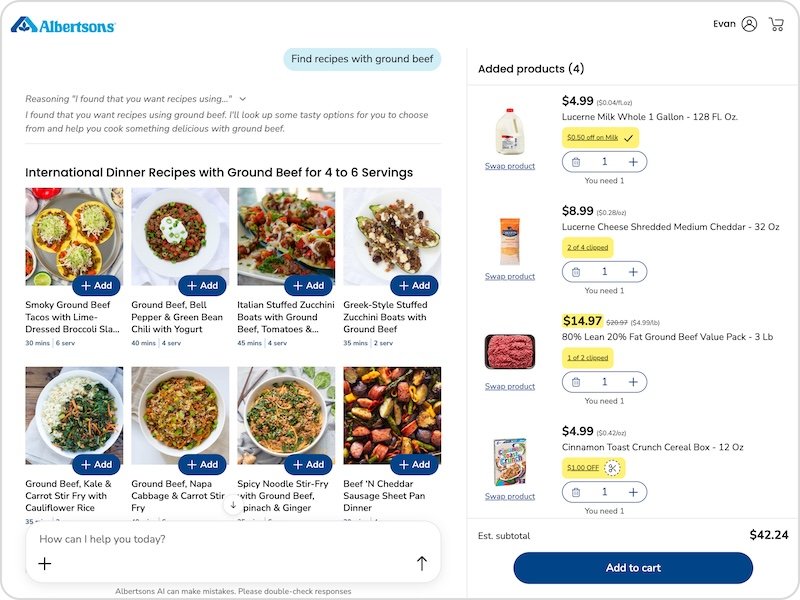Q&A: Andy Burton, CEO, Tryzens
RTIH: What is your take on the current state of the retail market?
Andy Burton: The retail sector is surrounded by pressures from a number of different areas like never before. From rising business rates to declining footfall on the High Street, alongside consumer confidence being impacted by Brexit. This combination leaves retailers struggling to maximise revenues and profits, while being squeezed left, right and centre.
Despite these challenges, the underlying and future opportunity within retail is healthy. The main issue to address is one of engagement and convenience, and as consumer buying habits evolve, it is vital that retailers can keep pace with consumer trends.
To do that they need to be agile and embrace the technologies that will enable them to meet their customers in the right channel and at the moment of choice. For instance, with the sharp increase in mobile device use, we have seen tremendous growth for retailers that have prioritised a mobile-first approach to engagement, ensuring the consumer experience is seamless across all channels.
Bricks and mortar stores are facing significant challenges; however the real world experience and opportunities are still there and the retailers that are successful will be those that create a more experiential event rather than a collection point, creating new ways to engage with a brand to leverage the physical extension in partnership with their digital offerings.
One thing is certain, while there are growing pressures in the retail sector, the market is not going to disappear; it’s just the shape and structure of the market that is changing, which requires brands and retailers to adapt accordingly.
RTIH: Which omnichannel retailers are forging ahead and what are the reasons for their success in these challenging times?
AB: Traditional national retailers such as Sainsbury’s and Argos seem to be making good progress in their omnichannel offerings, with a great strategy in place: supporting online purchasing with in-store distribution, albeit perhaps not challenging the norm and driving innovation.
Iconic British brands like Jack Wills are beginning to leverage new technology to create omnichannel experiences such as in-store iPad use as part of the shopper experience to provide an endless aisle capability to facilitate access to a wider stock than could ever be available in store. By enabling both in-store purchases and online orders in a single transaction, customers will have the greatest opportunity to purchase, which will encourage up-sale potential.
RTIH: How can retailers incorporate next-generation technology in-store and online?
AB: By its very nature consumerisation, which is a force felt most strongly in retail, is all about a process of continuous change. What is on trend or normal today will likely be different just months from now. The issue is to understand the leading indicators in consumer engagement and buying behaviour to influence and evolve future capability and have the processes, systems and team to orchestrate a process of continuous evolution. Analytics and BI are critical to analysing the best and most rewarding areas to focus upon.
Technology for technology’s sake does not help growth, but where it enables a retailer or brand to achieve specific business goals, it can deliver significant ROI by driving up sales, reducing costs or increasing loyalty. Retailers need to have a very clear idea about what they are trying to achieve by implementing new technologies.
Technologies such as artificial intelligence (AI) assist and entertain shoppers. Personalisation technologies or augmented reality (AR) enrich experiences and engage consumers in redefining the shopping experience and improving customer life-time value. For example, using personalisation (often enhanced with AI), retailers can create a personalised and interactive experience for consumers by placing the right product, in front of the right customer, at the right time, on their preferred device or channel.
Additionally, AI can be useful in other applications such as chatbots, assisted shopping and customer service, helping retailers reduce operational costs but improving perceptions of good service. For example, by using chatbots to engage and respond to customer enquiries efficiently retailers can make significant call centre cost reductions through call deflection.
Whilst retailers have often been focused on new customer acquisition, as pay per click (PPC) costs have risen and methods of engagement expanded, the focus has become a balance between retaining and leveraging existing customers.
This is a situation where third party solution providers, like Tryzens, can help. With retail experts who can help brands benchmark and identify where their strengths and weaknesses are, they can help provide insight driven guidance into the areas that need investment and provide impartial advice on what form of next-generation technology a retailer can call on to support their operations.
RTIH: Can online retailers continue to grow without support from brick and mortar stores?
AB: It is horses for courses. One or the other can exist on their own, it’s all about meeting a relevant market need and connecting with the consumer. However, the real question should be, if a retailer or a brand has both channels, how do they best leverage them together? The reality is a customer doesn’t necessarily view online and in-store as a different choice, but approaches the experience assuming it will be common in terms of products, pricing, loyalty benefits and the like.
Having separate experiences across channels, unless for deliberate market segmentation (e.g. an outlet site), is not intuitive. We are seeing more and more retailers embracing an omnichannel model, where a single view of a customer, products and stock are the key pillars upon which experiences can be built, regardless of the ‘storefront’ they choose to shop at.
That said, there is an increasing number of pureplays who have a store to drive real-world experience, not least Missguided or Amazon, but those stores need to be digitally enabled to keep the experience intuitive for their customers.
RTIH: How can retailers create a seamless customer journey through many devices and also incorporate bricks and mortar stores?
AB: While the platforms to create great experiences for individual channels have existed for some time, the crucial element is recognising the individual consumer’s journey as they move from channel to channel.
This means having the ability to identify the consumer across their different devices, such that the experience is consistent no matter which device or channel the consumer is using at any time.
Technology innovations are increasingly improving our ability to do this across devices, though for many retailers it is still not quite 100% as the challenge of synchronising data across legacy systems can be quite significant.
Additionally, innovative technologies can improve the in-store experience. For example, in-store beacons can flag product offers and promotions to consumers, as long as they have Bluetooth on and have downloaded the store’s app.
RTIH: What are the disruptive retail technologies to watch and which ones are overhyped?
AB: Well, there are a few of them. From the consumer-facing experience of AR, chatbots and loyalty apps to the background capabilities that make a great end to end experience like AI wielding Big Data and virtual reality for predictive engagement, intelligent middleware to enable agility over back-end legacy systems and distributed order management to improve supply experience and reduce fulfilment costs.
At its core, it is all about the data, harvesting, storing, manipulating analysis, pattern matching and predicting. Retail is at the forefront of the digital age and will continue to be a force for innovation and consumer experience.
It is important to note that retailers should look pragmatically at which specific technology is going to impact their particular business the most. For example, a typical chatbot can have a notable impact on retailer costs, driving down call centre costs and providing fast and efficient customer service.
Narvar’s 2017 ‘Bots Text and Voice’ Consumer Study, indicates that the Millennial age group is more comfortable than older age groups with chatbot technology, with many prefer talking to chatbots than to someone in a call centre. So, in that specific instance if a brand targets Millennials or Gen Z, deploying chatbots could be a sensible business decision.










Continue reading…